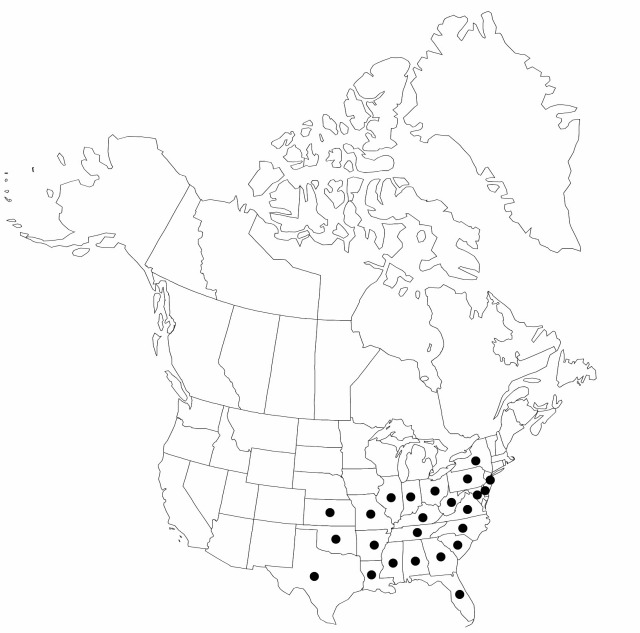Kyllinga pumila
Fl. Bor.-Amer. 1: 28. 1803.
Herbs, annual, cespitose, not rhizomatous. Culms (5–) 15–30 (–55) cm, smooth. Leaves flat to V-shaped, 4–20 (–30) cm × 1.5–3 (–3.6) mm. Inflorescences: spikes 1–3, pale greenish, (3–) 5–8 (–11) × 5–7 mm; bracts (3–) 4 (–5), horizontal to ascending at 30°, flat, (1–) 3–10 (–22) cm × 1–2.5 (–3) mm. Spikelets 50–150, lanceolate to ovatelanceolate, (1.9–) 2.4–2.8 (–3.8) × 0.6–0.9 mm; floral scales pale brownish to transparent, midvein not winged, laterally 2–3 (–4) -veined, ovate, (1.8–) 2.2–3.1 (–3.4) × 1–1.7 mm; stamens 2; anthers elliptic, (0.2–) 0.3–0.4 mm; style 0.5–0.8 mm; stigmas 0.5–0.9 mm. Achenes light-brown, stipitate, oblong, 1–1.2 (–1.4) × 0.5–0.6 (–0.7) mm, base cuneate to rounded, stipe to 0.1 mm, apex subtruncate, apiculate, finely papillose.
Phenology: Fruiting summer.
Habitat: Damp grasslands, shorelines, ditches, lawns, gardens
Elevation: 0–200 m
Distribution

Ala., Ark., Del., Fla., Ga., Ill., Ind., Kans., Ky., La., Md., Miss., Mo., N.J., N.Y., N.C., Ohio, Okla., Pa., S.C., Tenn., Tex., Va., W.Va., Mexico, West Indies, Central America, South America, Africa
Discussion
Selected References
None.
Lower Taxa
"shortened" is not a number.
